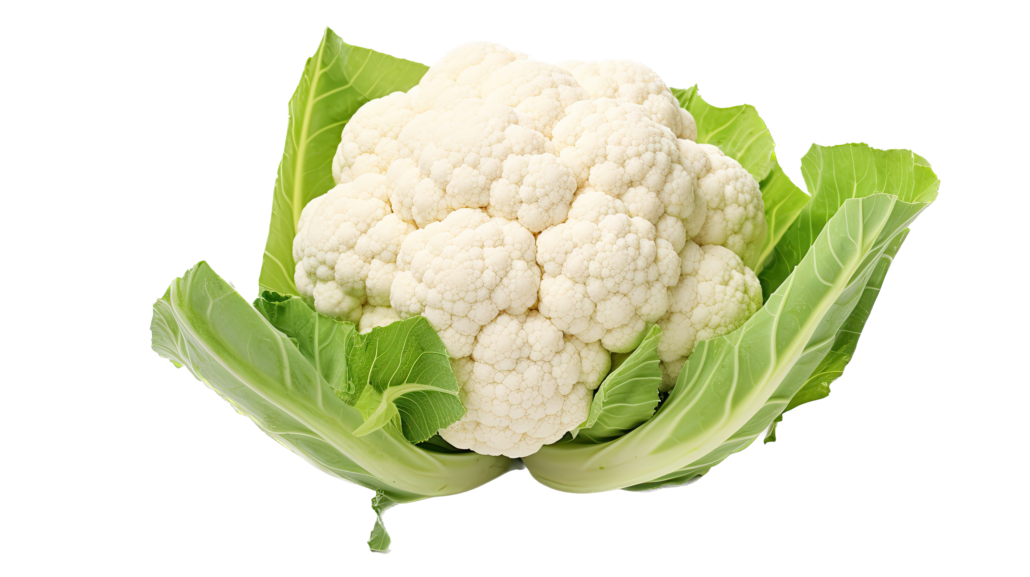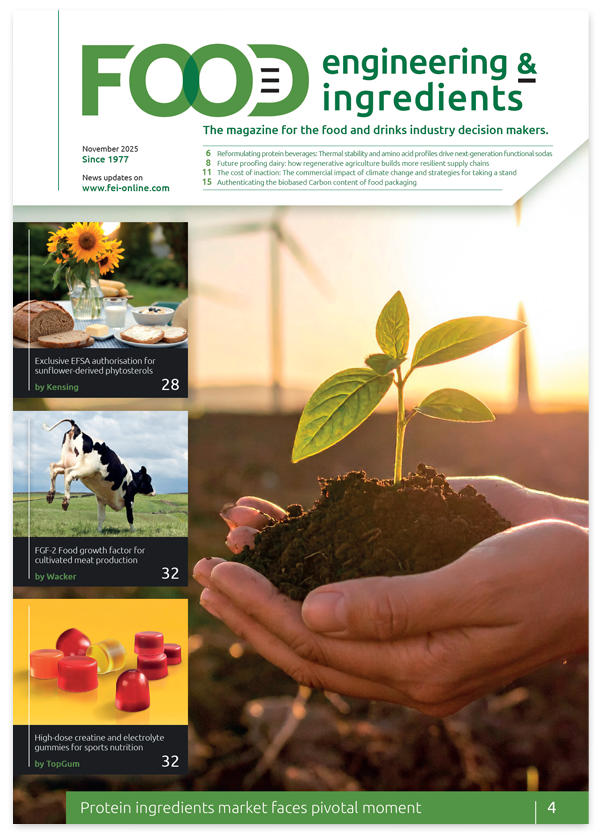AI in food production: Consumer trust, transparency and demographics shape industry future
Comprehensive analysis of consumer attitudes towards artificial intelligence in food manufacturing reveals complex patterns of acceptance and concern, with supplement users showing notably higher trust levels. New research uncovers significant demographic variations in AI acceptance, while demands for transparent labelling span all consumer segments. This investigation examines the technical, social, and regulatory implications of AI integration in food production systems, drawing from two major consumer surveys conducted in late 2024.
The public demands transparency in AI food production
Consumer demand for transparent labelling of artificial intelligence use in food production has reached a critical threshold, with 83% of surveyed consumers calling for mandatory declaration on product packaging. The findings, drawn from research commissioned by Ingredient Communications, highlight mounting pressure for regulatory frameworks around AI implementation in food manufacturing processes. More than half of all respondents strongly agreed with this assertion, while only 4% expressed complete opposition to such labelling requirements.
Safety perceptions drive labelling demands
The survey data reveals significant consumer uncertainty regarding AI-manufactured food safety, with 44% of respondents expressing concerns about consumption safety. This uncertainty appears to fuel demands for comprehensive labelling requirements, particularly regarding the extent of AI involvement in product development and manufacturing processes.
The research indicates a clear correlation between transparency demands and safety concerns. Consumers specifically seek information about AI’s role in ingredient selection, formula optimization, and quality control processes. When questioned about purchasing likelihood, 26% indicated they would be more likely to purchase AI-assisted products, while 29% expressed decreased purchase intention, revealing a complex terrain of consumer acceptance.
“Many food and beverage companies have rushed to embrace the benefits of AI technology but it’s important they take care to consider how consumers feel about this,” says Richard Clarke, Managing Director of Ingredient Communications. “We’ve seen a huge backlash against AI in the arts and entertainment business. To avoid the same fate, food and beverage manufacturers should pause to reflect on whether they are being sufficiently transparent about their use of AI.” Natural claims under scrutiny A significant majority (64%) of respondents indicated that AI-assisted food products should not carry ‘natural’ claims, highlighting potential implications for product positioning and marketing strategies. This stance reflects broader consumer sentiment regarding technological intervention in food production processes and raises important questions about the definition of ‘natural’ in modern food manufacturing contexts.
The research also revealed strong support for government oversight, with 78% of respondents advocating for legislative controls on AI implementation in food manufacturing. Only 6% opposed such regulatory measures, suggesting near-unanimous support for formal oversight mechanisms. This regulatory demand extends beyond simple labelling requirements to encompass comprehensive frameworks for AI deployment in food production systems.
Technical implementation in modern food production
The integration of AI in food manufacturing now extends far beyond basic automation. Contemporary systems employ sophisticated deep learning networks for real-time quality assessment, with convolutional neural networks (CNNs) processing thousands of product images per minute to detect defects with 99.9% accuracy. These systems simultaneously analyze multiple quality parameters, from colour consistency to packaging integrity.
Recent implementations have seen the emergence of hybrid AI systems that combine traditional statistical process control with advanced machine learning. These systems actively monitor and adjust production parameters, using reinforcement learning algorithms to optimize everything from mixing times to thermal processing conditions. In baking applications, for instance, AI systems now analyze oven temperature gradients and humidity levels, making micro-adjustments that human operators might miss.
Predictive maintenance systems, employing sophisticated sensor networks and temporal pattern recognition, now anticipate equipment failures before they occur. One major UK manufacturer reports a 45% reduction in unplanned downtime after implementing AI-driven predictive maintenance protocols.
Regulatory landscape and compliance frameworks
The regulatory environment for AI in food production is rapidly developing, with the UK Food Standards Agency currently developing specific guidelines for AI implementation in food manufacturing. These emerging regulations focus on three key areas: algorithmic transparency, data security, and quality control validation.
Recent proposals suggest that manufacturers will need to maintain detailed documentation of AI decision-making processes, particularly in critical control points. This includes maintaining auditable records of algorithm training data and validation procedures. The European Food Safety Authority has already implemented preliminary guidelines requiring manufacturers to demonstrate the reliability of AI systems
through systematic validation studies.
Cross-border considerations add complexity to the regulatory situation. Products manufactured using AI systems must now comply with varying international standards, with some jurisdictions requiring specific declarations of AI involvement in different aspects of production. Japanese regulations, for example, now require explicit disclosure of AI use in food formulation optimization.
Supplement users lead AI food tech adoption
A striking pattern has emerged in consumer attitudes towards AI in food production, with dietary supplement users demonstrating significantly higher trust levels compared to non-users. Recent research indicates that 64% of supplement users view AI technology positively for humanity, contrasting sharply with 40% of non-supplement users. This marked difference suggests a correlation between proactive health management and openness to technological innovation.
Personalisation acceptance rates
The data reveals particularly strong acceptance of AI-driven personalisation among supplement users, with 62% willing to allow AI analysis of their genetic makeup for nutritional recommendations. This represents nearly double the acceptance rate of non-supplement users, at 33%. The significant disparity in acceptance rates suggests that familiarity with nutritional supplementation may predispose consumers to embrace technological innovation in personal health management.
Advanced applications in personalized nutrition
AI systems in supplement production now employ sophisticated nutrient interaction models, using graph neural networks to predict both positive and negative ingredient interactions. These systems analyze vast databases of biochemical interactions, enabling the development of more effective formulations. Manufacturers are implementing real-time formulation adjustment systems that can modify product compositions based on aggregated consumer response data while maintaining regulatory compliance.
Trust patterns and safeguards
Despite higher trust levels, supplement users maintain stringent expectations for transparency. The research shows 87% of supplement users support mandatory AI declaration on labels, compared to 79% of non-supplement users. This suggests that increased technological acceptance does not diminish demands for clear communication and regulatory oversight.
“The profile of a typical supplement user is someone who is more likely to embrace scientific and technological innovation if it enhances their wellbeing or gives them an edge in physical and mental performance,” notes Clarke. However, he emphasises that supplement users “still expect transparency around the use of AI in the food and beverage sector.”
Generational divides: Age-based perspectives on AI in food
Significant generational differences in AI acceptance have emerged, with younger consumers demonstrating markedly higher comfort levels with AI-assisted food production. The research reveals that 65% of Generation Z and 57% of Millennial respondents express positive attitudes towards AI in food manufacturing, contrasting sharply with 44% of Generation X and 25% of Boomer respondents.
Technical understanding variations
The generational divide extends beyond simple acceptance levels to encompass varying degrees of technical understanding. Younger generations demonstrate greater familiarity with AI algorithmic decision-making processes and machine learning applications in food production. Their comprehension of automated quality control systems and digital supply chain optimization reveals a generational gap in technological literacy that may influence
future market dynamics.
Economic implications
Consumer expectations regarding AI implementation extend beyond safety and transparency to economic considerations. The research indicates that 79% of respondents believe AI-derived cost savings should translate to reduced retail prices, highlighting expectations for tangible consumer benefits from technological advancement.
The economic implications of AI implementation generate varying responses across age groups, with younger consumers more likely to accept premium pricing for AI-optimized products and value technological innovation in food production. Their understanding of cost-benefit relationships in AI implementation and recognition of long-term economic advantages suggests a more distinct view of technology’s role in food production economics.
Technical innovation and implementation challenges
Manufacturing facilities implementing AI systems face significant technical hurdles in integration. Current systems must process data from multiple sources – from spectroscopic analyzers to thermal sensors – in real-time. Edge computing solutions have emerged as a crucial component, with processing units installed directly on production lines to enable sub-millisecond decision-making.
Quality control systems now employ multi-modal AI analysis, combining computer vision with spectral analysis and physical testing. These systems can detect subtle variations in product characteristics that might escape traditional quality control methods. For example, AI-powered near-infrared spectroscopy can now predict product shelf life with 92% accuracy by analyzing molecular changes invisible to the human eye.
Employment impact concerns
The survey reveals complex attitudes towards AI’s potential impact on employment, with 40% of respondents considering job displacement unacceptable even if it results in lower product prices. This suggests that consumer support for AI implementation may be contingent on responsible deployment that considers workforce implications. A third of respondents (33%) viewed job displacement as an acceptable trade-off for reduced prices, indicating significant division on this issue.
Future implications for industry standards
The research indicates that while general sentiment towards AI technology remains cautiously positive, with 52% viewing it as beneficial for humanity, specific applications in food production generate more reserved responses, with only 42% expressing positive attitudes. This gap between general and specific application acceptance suggests that food manufacturers must carefully navigate implementation strategies and communication approaches.
The findings underscore the need for a balanced approach to AI implementation in food production, balancing innovation with transparency while acknowledging demographic variations in acceptance levels. As the industry continues to integrate AI technologies, clear communication strategies and robust regulatory frameworks appear crucial for maintaining consumer trust across demographic segments.






